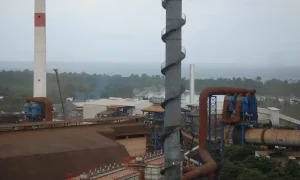Have you always wanted to be a farmer, but the country life is too far away? Did you want to take up urban farming and grow your own produce in the city? I’ve got some great tips on how to get started and what steps you need to take to turn your space into a sustainable oasis.
How to Start a Urban Farm
To start your urban farm, first you need to obtain the right permits. The first permit is an agricultural zone permit, which costs $500. You should also look into getting a zoning variance or conditional use permit from the city if you want to grow specific crops. Once you have these permits, you can start planting! You may also want to consider installing a rainwater harvesting system if it doesn’t rain often in your area. This blog is about starting an urban farm. The author discusses what you need to start a farm, how to plant in containers, when to harvest, and how much rent you should be paying for the land.
The City Farming Solution
Urban Farming can be defined as the process of growing crops within an urban environment. It is a response to shrinking farmland and the growing population, but also an opportunity for sustainable farming, food security, and economic development. Urban farming has been a fascinating trend for the past few years.
As more and more people have moved away from rural areas, they have realized that it may be even harder to farm in the future. Urban farming is a solution to this problem. It provides an alternative to traditional farming as well as a way to provide food for those who live in urban areas. And now, with technological advances, it is possible for those living in cities to have access to fresh vegetables all year long.
Why is urban farming important
Urban farming is important because it provides jobs and fresh food for people living in the city. It uses less land than traditional farming and helps reduce food waste. Urban farming is important for many reasons. Farming helps provide fresh food to people living in cities who might not otherwise be able to buy it. It also helps keep land undeveloped, which can be environmentally beneficial. When there are fewer farms, people will need to create more farmland, which means they destroy the natural habitats of endangered animals and plants.
Sustainable Urban Farms
The concept of urban farming has been popping up more and more in recent years. The idea is to grow plants inside the city, which can provide much-needed food for those living there. This is a sustainable alternative that doesn’t require bringing in food from outside the city. Urban farming is a term used to describe the practice of producing food, as well as other products, in or as near as possible to urban areas. The idea of urban farming is that it promotes sustainable agriculture and combatting climate change by reducing transportation costs and helping reduce air pollution.
4 Reasons Why You Should Start a Personal Garden
Urban farming is the act of growing crops, vegetables, and herbs in the city. If you’ve never done it before, it might be hard to know where to start.
Follow these 4 steps to get started:
1) Find out if your municipality allows indoor farming – check with your local government offices 2) Decide what to grow – this will depend on your climate and available space
3) Gather supplies – purchase seeds or young plants, find pots or other containers that will fit indoors
4) Prepare your indoor farm – make sure there’s enough natural light, set up a fan for ventilation








